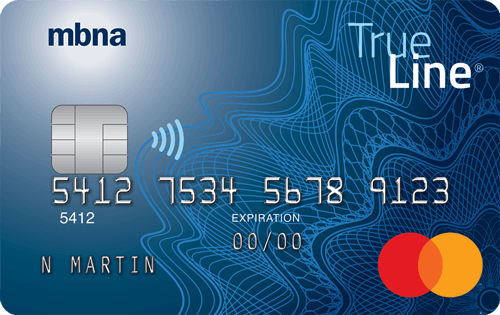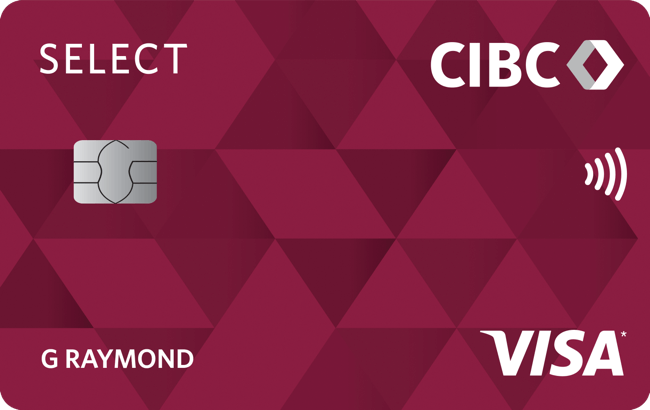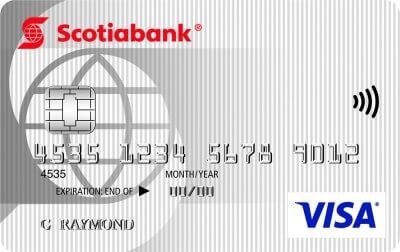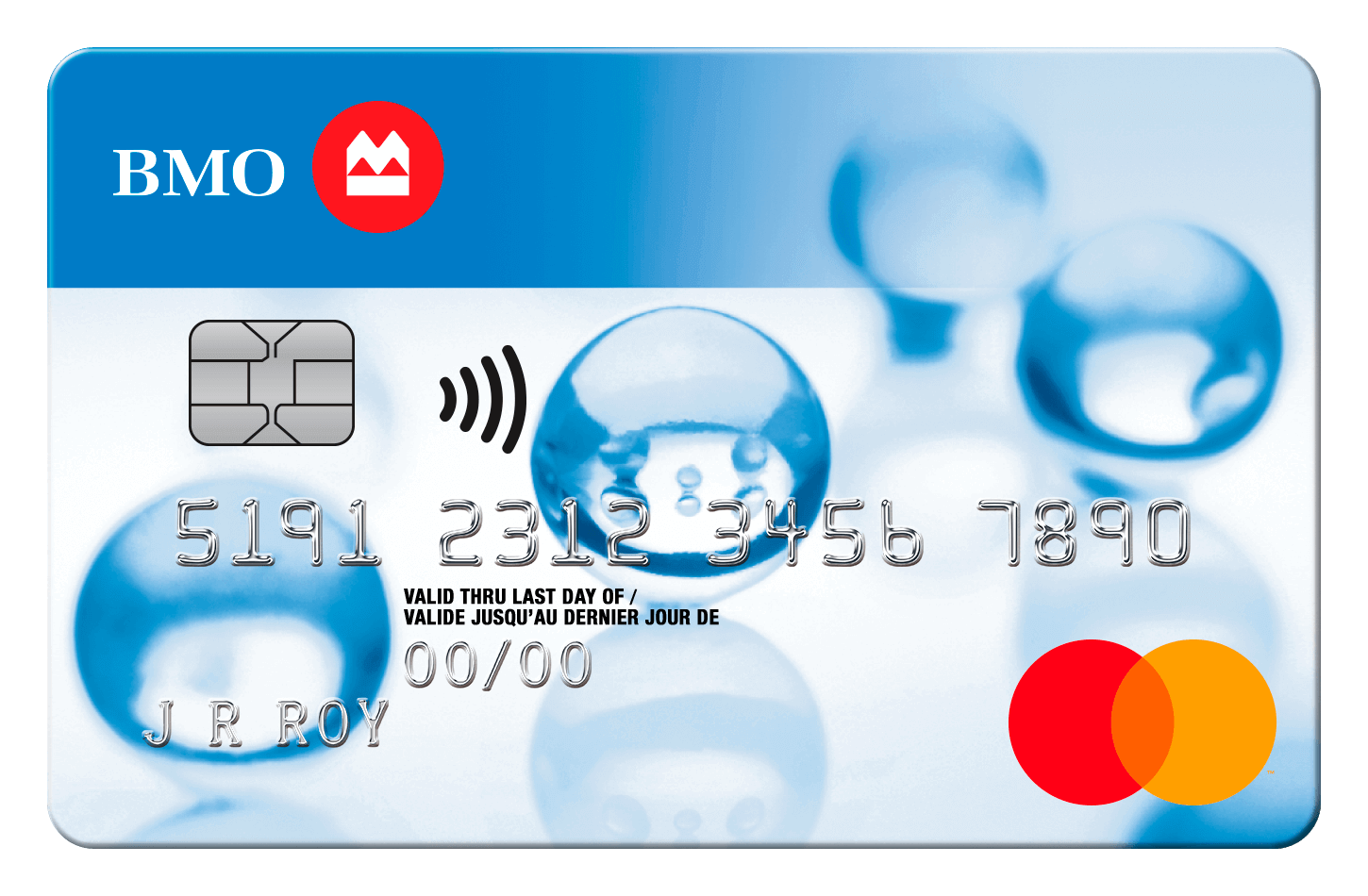The best balance transfer credit cards in Canada for 2024
Moving your credit card debt to a balance transfer card can help you pay off the debt more quickly by paying little or no interest.
Why trust us
MoneySense is an award-winning magazine, helping Canadians navigate money matters since 1999. Our editorial team of trained journalists works closely with leading personal finance experts in Canada. To help you find the best financial products, we compare the offerings from over 12 major institutions, including banks, credit unions and card issuers. Learn more about our advertising and trusted partners.
Best balance transfer credit cards in more detail
If you carry a balance on a regular credit card, chances are you’re paying around 20% in interest. At that rate, it can become difficult to keep up with the payments and your debt can spike—fast. Moving your credit card debt to a balance transfer credit card can help you pay off the principal more quickly by giving you access to a lower regular interest rate. Many balance transfer cards offer a welcome bonus with an extra-low (and sometimes 0%) rate for a limited time. Check out our picks for the best balance transfer credit cards in Canada.
MBNA True Line Mastercard
At a glance: With a 0% balance transfer rate for a full year, the MBNA True Line Mastercard offers a lot of runway to bring down your debt. This card doesn’t charge an annual fee, which is another advantage if you’re working to pay off an existing balance.
MBNA True Line Mastercard
- Annual fee: $0
- Interest rates: 12.99% on purchases
- Balance transfer offer: You can earn a 0% promotional annual interest rate (“AIR”) for 12 months on balance transfers completed within 90 days of account opening, with a 3% transfer fee.
This offer is not available for residents of Quebec.
- Earn rates: None
- Annual income requirement: None
- Recommended credit score for approval: 660 or higher
- Interest rates: 24.99% on cash advances, 12.99% on balance transfers
Pros
- The MBNA True Line Mastercard is a rarity among balance transfer cards, offering a balance transfer promotion without charging an annual fee—an ideal combination for cardholders looking to save on both fees and interest.
- A balance transfer promo of 0% is as low as it gets, and this card’s offer lasts for an entire year, the longest promotional period of any card on this list.
- Whereas many comparable cards require you to transfer your balance right away, the MBNA True Line offers greater flexibility by giving you up to 90 days after opening the account to complete the transfer.
- Aside from benefiting from the balance transfer promo, there are other ways to save on interest on your everyday purchases. MBNA’s Monthly Payment Plan can help you reduce interest on large purchases (those of at least $100) by breaking payments into smaller, more manageable chunks over longer periods of time (6, 12 or 18 months).
- Even after the card’s 0% promotional rate comes to an end, its regular balance transfer rate is just 12.99% (considerably lower than the average of 22.99% for other credit cards).
Cons
- While the MBNA True Line doesn’t have an annual fee, it charges a transfer fee of 3% on the transferred balance or a minimum of $7.5 (meaning that you pay $30 for every $1,000 transferred). The 3% transfer fee is the card’s biggest con and is notably higher than the other balance transfer cards on this list.
- Though its purchase and balance transfer interest rates are low, the MBNA True Line charges a high 24.99% APR on cash advances.
CIBC Select Visa Card
At a glance: The CIBC Select Visa Card offers an attractive 13.99% interest rate, even on cash advances, and it has a 10-month balance transfer offer of 0% interest and a low 1% balance transfer fee. A handful of other perks, like common carrier accident insurance and discounts on gas, round out the package.
CIBC Select Visa Card
- Annual fee: $29
- Interest rates: 13.99% on cash advances, 13.99% on balance transfers
- Balance transfer offer: Transfer your credit card balance. Get 0% interest for up to 10 months with a 1% transfer fee and a first year annual fee rebate. Terms and conditions apply.
Pros
- While the CIBC Select Visa does charge an annual fee, the balance transfer fee is only 1% (meaning you pay just $10 for every $1,000 transferred). For particularly large balances, the transfer fee can be a huge factor in determining which card is right for you and is potentially even more important than the card’s annual fee.
- A rare and welcome addition for a low-interest card, the CIBC Select Visa offers cardholders up to $100,000 in common carrier accident insurance, which covers injuries occurred while traveling inside a plane, cruise or other common carrier forms of transport.
- When you link this card with Journie Rewards, you can save up to $0.10 per litre on gas at participating Pioneer, Fas Gas, Ultramar and Chevron gas stations.
Cons
- The card’s balance transfer promotion is for 10 months, which isn’t as long as the aforementioned MBNA True Line Mastercard.
- The balance you’re transferring cannot be over 50% of your total approved credit limit. Depending on the limit you’re approved for and the balance you plan to transfer, your balance transfer request may be rejected.
- The card’s regular interest rate on purchases and balance transfers is 13.99% (after the promo period ends), which is slightly higher compared to other cards on this list.
Scotiabank Value Visa
At a glance: For those who bank with Scotiabank, the Scotiabank Value Visa offers an enticing balance transfer option. The annual fee is a manageable $29, and the fee is waived for the first year or waived altogether if you have Scotia’s Preferred or Ultimate banking package. The 12.99% interest rate is among the lowest around, making it suitable for consolidating your debt.
Scotiabank Value Visa
- Annual fee: $29
- Balance transfer offer: 0% introductory interest rate on balance transfers for the first 10 months. Offer ends 31 October 2024.
- Recommended credit score for approval: 670
- Interest rates: 12.99% on cash advances, 12.99% on balance transfers
Pros
- The Scotiabank Value Visa charges a transfer fee of only 1% or a minimum of $5 (meaning that you pay just $10 for every $1,000 transferred). For large balances in particular, this low transfer fee can be a huge advantage.
- Aside from the promotional balance transfer offer, the Value Visa has a low regular interest of 12.99% on all card transactions including cash advances.
- Get a 25% discount on rental cars at participating Avis locations.
- Cardholders can also save on interest with the Scotia SelectPay Program, which lets you break up large purchases (of at least $100) into more manageable monthly installments (an interest rate and installment fee applies and varies by plan).
Cons
- The card’s balance transfer promotion is ten months, which isn’t as long as the aforementioned MBNA True Line Mastercard.
BMO Preferred Rate Mastercard
At a glance: BMO’s Preferred Rate Mastercard comes with a low regular interest rate of 13.99% and an annual fee of only $29, which is waived for the first year. The balance transfer offer isn’t as strong as others on this list, but can still save you money compared to a regular card.
BMO Preferred Rate Mastercard
- Annual fee: $29
- Interest rate: 13.99% on purchases
- Welcome offer: You can earn a 0.99% introductory interest rate on Balance Transfers for 9 months with a 2% transfer fee and we'll waive the $29 annual fee for the first year*.
- Annual income requirement: $15,000 (personal or household)
- Recommended credit score for approval: 660 or higher
- Interest rates: 15.99% on cash advances, 15.99% on balance transfers
Pros
- The BMO Preferred Rate has a low annual fee of $29, which is below average for a low-interest card.
- Aside from the promotional balance transfer offer, the BMO Preferred Rate has a low regular interest rate of 13.99% on purchases and 15.99% on cash advances.
Cons
- The card’s biggest drawback is that its balance transfer promo rate sits at 0.99%—other cards on this list offer transfer rates of 0%. Also, the promotional period lasts just nine months, and a 2% transfer fee applies.
How we determine the best balance transfer cards
The MoneySense editors apply their credit card expertise and knowledge of Canadians’ financial goals to come up with selection criteria that matches the needs of the intended cardholder. With balance transfer credit cards, the key considerations are the length and rate of the balance transfer promotion, as well as the balance transfer fee. Our rankings are an unbiased source of information for Canadians. The addition of links from affiliate partners has no bearing on the results. Read more about our selection process and about how MoneySense makes money.
What is a balance transfer?
A balance transfer is the transfer of debt from one credit card to another. Although a cardholder can transfer their debt for a variety of reasons, the goal is usually to cut down on the amount of interest charged and to pay off the loan faster.
As most everyday-use credit cards command an interest rate of around 20%, your principal debt load can bloat quickly. By transferring debt to a card with a lower interest rate, you’ll incur lower interest charges—so more of your money goes to the principal balance.
How does a balance transfer work?
A balance transfer can help you save on interest charges by moving your credit card balance to another card with a lower interest rate. To demonstrate how credit card balance transfers work, let’s compare the interest charged on an outstanding credit card balance over time.
Let’s say you have a credit card with a balance of $4,000 and a 20.99% annual interest rate. Every month, you make a $400 bill payment. Should you stick with paying down the balance on your existing card or transfer the balance to a balance transfer card with a lower interest rate? For this example, we’ll use the MBNA True Line Mastercard, which comes with a 0% promotional interest rate for 12 months and a 3% transfer fee.
| Regular credit card | Balance transfer credit card | |
| Initial credit card balance | $4,000 | $4,000 |
| Purchase interest rate | 20.99% | 0% for 1 year |
| Monthly payment | $400 | $400 |
| Balance transfer fee | N/A | $120 (3% of your initial balance) |
| Months required to pay off balance | 12 | 10 |
| Total interest paid over time | $435.20 | $0 |
| Total cost | $435.20 | $120 |
In this case, you’d save $315.20 in interest ($435 – $120) and pay off your debt two months faster by transferring the balance to the MBNA balance transfer credit card in the example above.
One thing to consider is the fee associated with the transfer, which can range from 1-3% of the total balance you are transferring to another card. The fee might be small compared to the interest charges you are paying, if you have a high balance on your credit card.
If you have a relatively small amount on your card, like $1,500, but you notice you are constantly carrying a balance and paying interest charges, consider swapping out your card for a low-interest credit card with your existing bank, or applying for a new card at another financial institution instead. That way, you won’t pay a balance transfer fee or additional interest on the balance (until the balance transfer promotion period ends, so make sure to pay it off before then). Some card issuers will even rebate or waive your new card’s annual fee for the first year.
If you switch to another card with your current bank, you can generally have the lower interest rate applied to your existing balance and reduce your total interest charges. Keep in mind that if your balance represents a large amount of your available credit on the new card, too, and your utilization ratio creeps above 30%, it may be worthwhile to look into a balance transfer credit card. This is because balance transfers usually only affect your credit score in the short term, and reducing your credit utilization ratio can be beneficial for your score in the medium to long term.
Example of how a balance transfer works with a small balance
| Regular credit card | Balance transfer credit card | |
| Credit card balance | $1,500 | $1,500 |
| Purchase interest rate | 20.99% | 0% for 1 year |
| Monthly payments | $200 | $200 |
| Balance transfer fee | N/A | $45 (3% of your initial balance) |
| Months required to pay off balance | 9 | 8 |
| Total interest paid over time | $121.96 | $0 |
| Total cost | $121.96 | $45 |
In this example, you’d save $76, and it would only take one less month to pay off your balance, so it may not make sense to use a balance transfer.
How to do a credit card balance transfer
Balance transfers can be an effective way to consolidate and address debt. There are seven things to consider before you apply for a balance transfer card.
- Shop around for the rate, timing and terms that suit you best
If you’re trying to eliminate credit card debt, your best bet might be a balance transfer credit card. These cards come with promotions that let cardholders pay very low interest (sometimes as little as 0%) for a limited time (like six or 10 months). These offers can be a really effective way to bring down your debt fast, if you are disciplined about making regular payments and are not racking up a lot of new purchases. The card you choose will depend largely on what’s available when you’re looking, how long you think you’ll need to pay off your debt, and the card’s other terms. - Make sure you’re eligible for the balance transfer
Balance transfer promotions are only valid when moving debt from a credit card at one bank to a card at another bank. It will not work between two cards from the same bank. - Timing is everything
Balance transfer promotions are available at the time that you make your application or sometimes shortly thereafter. Be strategic about when you apply, and make sure you’re prepared to make the transfer. That means having the credit card company name, your name as it appears on the card, the debt total and the credit card number. - Remember that balance transfer promotions don’t last forever
The low, single-digit rates available on balance transfer credit cards are limited-time offers. Once the promotional period is over, the cards’ regular interest rates will kick in, which will affect your monthly payments. How you handle this will depend on the amount of debt you have and how quickly you plan to pay it off. But, in general, the best strategies include paying off the balance before the balance transfer offer ends and picking a card with a low regular interest rate. This way, you’ll save money on interest even if you still owe after the offer period. - Make your minimum payments
Even when taking advantage of a balance transfer offer, you must make at least the minimum payment on the card, on time, each month. If you don’t, that super-low promotional interest rate can quickly be discontinued and the standard interest rate will kick in almost immediately. In other words, only take advantage of a balance transfer offer if you have the cash on hand to make at least the minimum payment each month and you’re in the right financial mindset to take on debt repayment. - Balance transfer fees
Some—but not all—cards charge a fee for balance transfers. This fee is expressed as a percentage of the total amount you want to move, and it usually ranges from 1% to 3%. So, for example, if you’re looking to transfer $1,000 in debt to a card with a 3% fee, your opening balance will be $1,030. The additional cost may well be worth the money you’ll save at the new lower interest rate. But keep your eyes open for fee deals: Occasionally, a card will run a promotion where the balance transfer fee is waived. - Separate your expenses
If you charge a new purchase to your balance transfer credit card, this spend will be charged at the card’s regular interest rate if you don’t pay on time, not the promotional rate that’s applied to the balance you’ve transferred. This might not seem like a big deal, especially if you’ve been lucky enough to find a card with a lower regular rate, but there’s an additional catch: Most credit cards apply payments to debt marked at the low or promotional rate first, which means your high-interest purchases are sitting there longer, racking up interest. If you’re trying to pay down debt, this only compounds the problem. It’s good practice to leave your balance transfer card at home and use a different financial product (like debit, cash or even a different credit card) for new purchases.
Do you earn cash back on balance transfers?
Like cash advances or purchases of money orders, balance transfers are not considered to be purchases, so in general, they’re not eligible for cash back rewards. There may be some rare exceptions with certain promotional offers, but these are few and far between. That said, the interest saved by moving your debt to a card with a lower interest rate will far outweigh the value of most cash back returns.
How does a balance transfer credit card impact my credit score?
When you apply for any credit card, you receive a hard credit inquiry that can temporarily bring your credit score down a few points. This includes balance transfer cards. However, this is not a reason to avoid applying.
If you’re looking into a balance transfer credit card, it’s likely because you’ve got some outstanding credit card debt. Moving that debt in order to reduce it will have a positive, lasting impact on your credit score in the medium to long term.
The lower interest rate means more of your money goes to paying down the balance, so you can reduce your debt load faster. A smaller debt load can improve your credit score because it lowers your credit utilization—a major credit score factor that measures the ratio between the balance and the total credit limit. Say you owe $600 on a credit card with a limit of $2,000. Your credit utilization would be 30%. Having a credit utilization score of 30% or lower is considered good.
When you consider everything, the damage your debt load does to your credit score far outweighs the small and temporary effect on your credit score caused by a credit card application. When it comes to debt, always look for the longer-term solution.
More of Canada’s best credit cards:
- Best credit cards in Canada
- Best rewards credit cards
- Best travel credit cards
- Best low interest credit cards
- Best cash back credit cards
- Best no fee credit cards
- Best balance transfer credit cards
- Best student credit cards
What does the * mean?
Affiliate (monetized) links can sometimes result in a payment to MoneySense (owned by Ratehub Inc.), which helps our website stay free to our users. If a link has an asterisk (*) or is labelled as “Featured,” it is an affiliate link. If a link is labelled as “Sponsored,” it is a paid placement, which may or may not have an affiliate link. Our editorial content will never be influenced by these links. We are committed to looking at all available products in the market. Where a product ranks in our article, and whether or not it’s included in the first place, is never driven by compensation. For more details, read our MoneySense Monetization policy.



